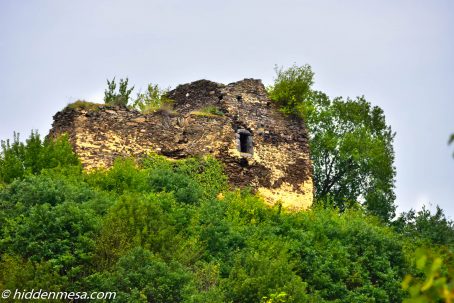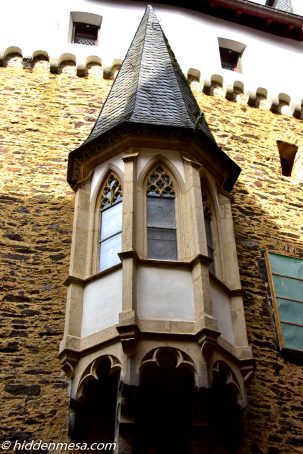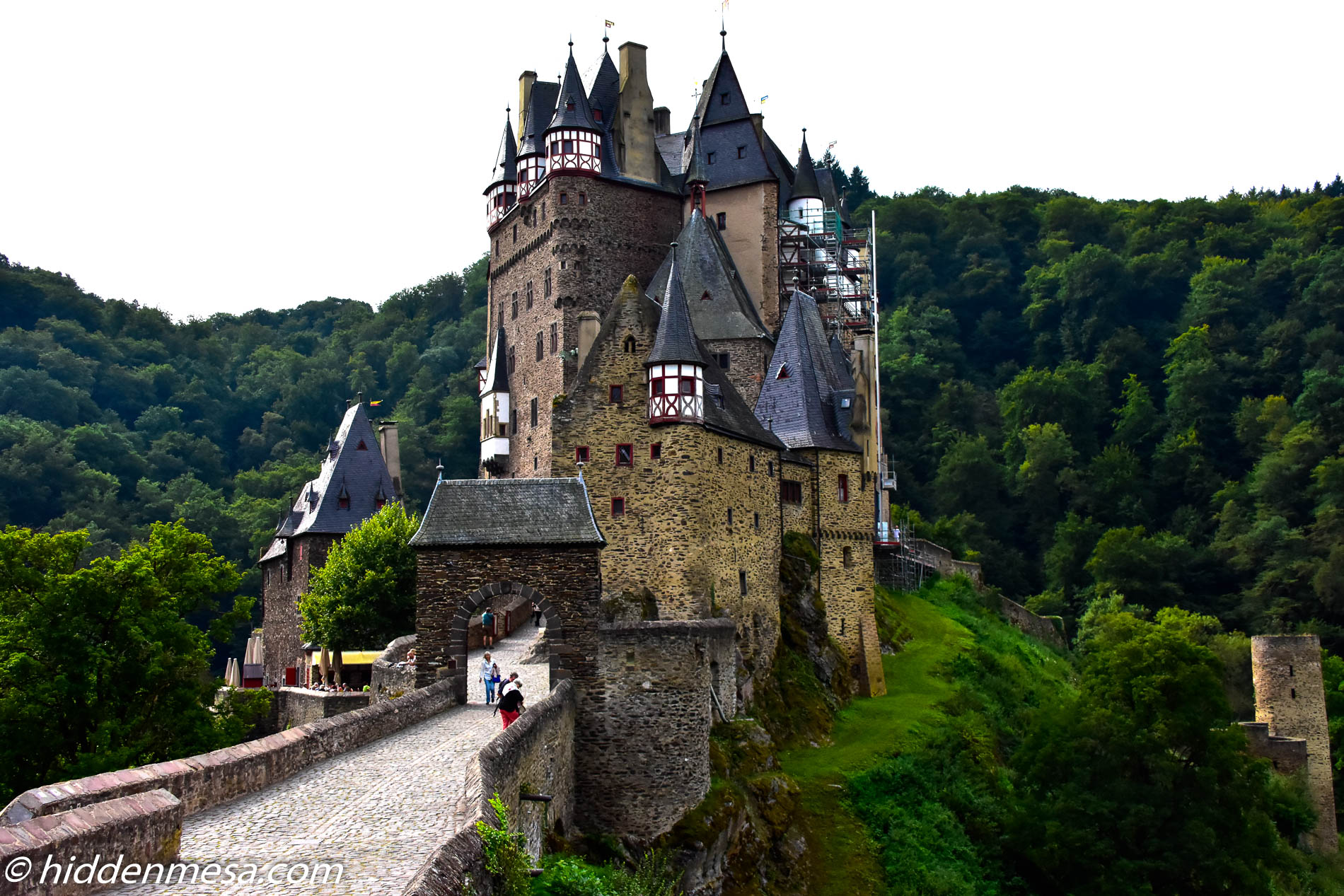Eltz Castle is one of the few castles in Europe that’s never been destroyed, by fire, by war, by anything. We spent some time walking the grounds and touring the interior of this pristine noble home, and came away with an appreciation for how life could have been for the very wealthy in the middle ages.
Early History
It all began in the 12th century, when three branches of the Eltz family jointly built this castle along a trade route between the Moselle River and the Eifel Region. The Eifel Region is an area of mountains in western Germany and eastern Belgium. According to the information we’ve read, the idea of having more than one part of a family jointly owning a castle is simply one of economics. One family by itself could not afford to build, own, or maintain a castle, but by pooling resources, several families could enjoy the status and more importantly, the security of having a large, defensible castle.
The castle has only been attacked one time, between 1331 and 1336. There was a dispute between the leader of an area known as the Trier region of Moselle and the knights of several houses, including Burg Eltz. It seems that these knights had been allowed to wander away from loyalty to the previous Trier Leader, and when Archbishop Baldwin took power, he decided to set things straight.

Ruins of the siege castle that was built by Archbishop Baldwin during the Eltz Feud of 1330. The ruins are approximately 230 meters away from Eltz Castle and uphill, which provided a good strategic position from which to launch a five year attack. Photo by Bonnie Fink.
The Archbishop made a direct assault on Burg Eltz, but failed, so he built a “siege castle,” which was a fortified structure about 230 meters away from Burg Eltz and slightly uphill. The purpose of the siege castle was simply to give soldiers a safe place from which to lay siege to Burg Eltz without being in danger themselves. Archbishop Baldwin pummeled Eltz Castle for several years, using rock filled trebuchets and an early form of cannon.
The purpose of the siege was not to destroy the knights of Eltz, but to bring them under control of the Trier government. After five years of siege, the Eltz knights finally agreed to recognize Archbishop Baldwin and the feud ended.
Where is Burg Eltz
Burg Eltz is located in southwestern Germany near the town of Wierschem. We were staying in Cochem, along the Moselle River when we visited, so it was simply a matter of driving along the river to Moselkern, where we headed inland towards Wiersham. Using a rental car, it wasn’t a problem to find the castle. There was a parking fee, and from the parking lot there were two choices to get to the actual castle site. First, there was a walking path of about 1.3 kilometers (about .8 miles), and there was a shuttle bus. This is a downhill walk to the castle, so it’s easy getting there, and a little more difficult getting back to the car. The shuttle bus was €2.00 each person, each way. We rode the shuttle bus, but had we known that the tickets were only good for one way, we probably would have walked downhill into the castle grounds, and ridden the shuttle back out.
What will you see at Burg Eltz

Rooms for worship were often built high above the ground, outside of the main building. The rules requiring a private worship place were complex. One could not live above the chapel, for example, which is probably the reason they were attached outside the main building. Photo by Bonnie Fink.
There are no photographs allowed inside the castle. This is highly annoying to folks like us who are trying to bring stories to folks like you, but we understand. They are probably concerned about flashes damaging artwork, tapestries, and wall paintings. And we know that they can’t simply say, “No flashes” because of the large number of people who won’t read their manuals on their phones and cameras, and have no idea how to turn their flashes off. Plus, it’s their castle. Their rules. So we’ll show you no pictures from inside.
The interior is only open for tours from early April through the first part of November, but the grounds and the interior court are open year-round .
There was a small gift shop where you purchased tickets to take a tour of the interior of the castle. The cost was €10.00 per person, and there were tours in German and English, with French and a few other languages on request.
The castle is divided into three separate family spaces which were used for the three separate branches of the Eltz family. This works to an advantage here because on the tour, we were able to see a complete set of rooms, from the entrance hall, through the living quarters, and finally right down to the kitchen. We did this without infringing on the Eltz family’s private living space, which they still maintain elsewhere in the castle, apart from the spaces set aside for touring.
Many of the walls were hand painted with artwork as was the style in medieval Europe, with tapestries on the walls, carvings and paintings on the bedroom furniture, and so on. There were several examples of various chests, tables, and chairs from earlier times, and apparently these furnishings are pieces that have been in the Eltz family throughout the centuries.
There was a “treasury,” which was a museum that displayed personal family items from jewelry, to tableware, to clothing. There was also a large assortment of weapons, including swords, bows, cross bows, various long guns, pistols, and derringers. This was included in the price of the tour, but was self-guided, so you could take your time in this area.
There were two areas to grab a bite to eat, or have a drink, and there was a set of stairs leading down to the Eltz River. The river area was a treat because it gave a sense of how the forest would have been, and still is, for that matter.
Overall
We think that touring Burg Eltz is worth the time if you happen to be in Germany, and happen to be passing through this area. It’s a relatively small castle in a remote area of the forest near the Moselle River, but considering its long history, and its pristine condition, we think it’s worth it. We’ve seen many castles that were well conditioned and furnished, but it was an extra special treat to know that the furnishings in this castle were actually family possessions, from the original and current family. And that the family has had this home longer than a great many countries have even been in existence was extra special as well.









